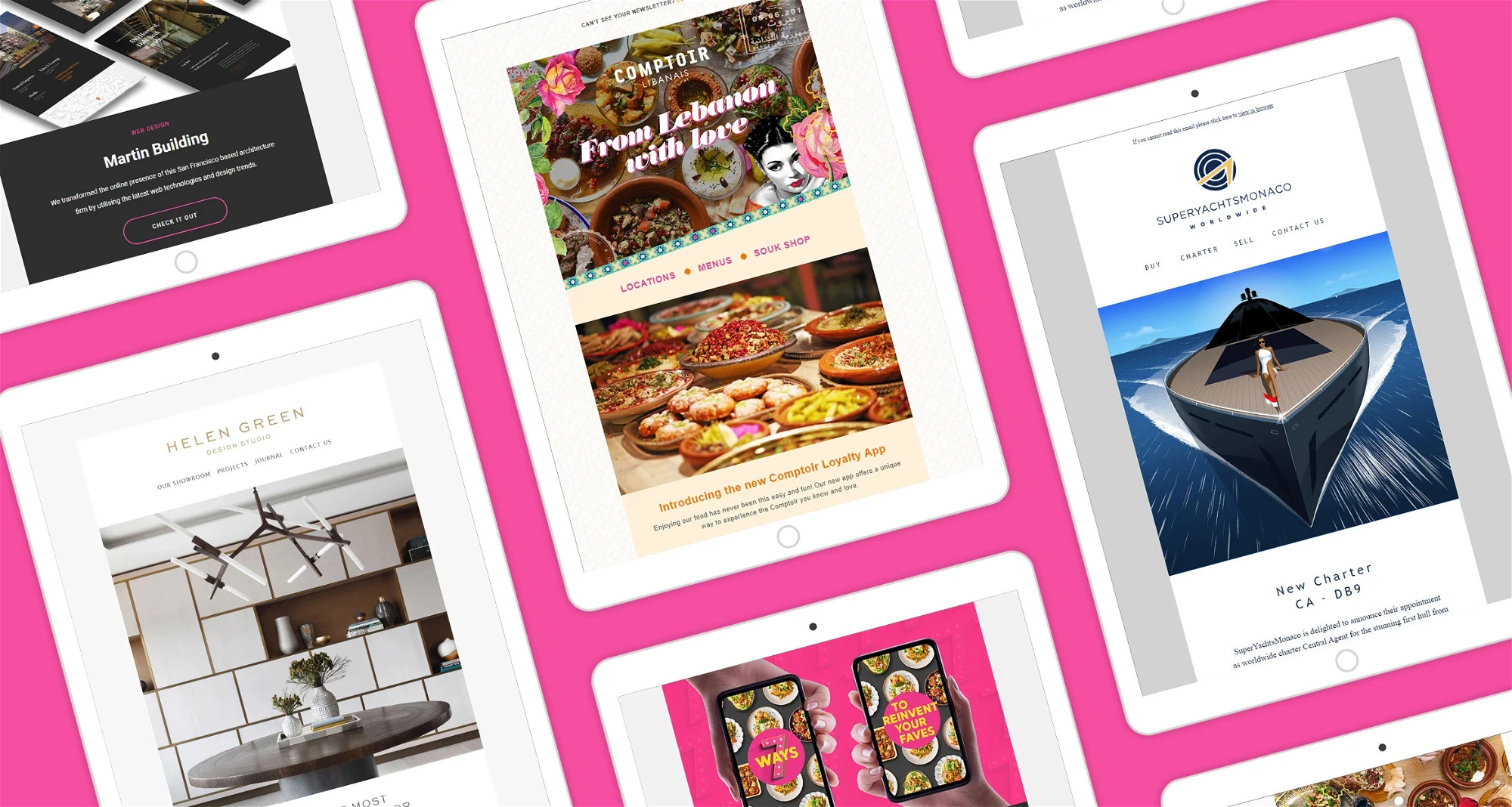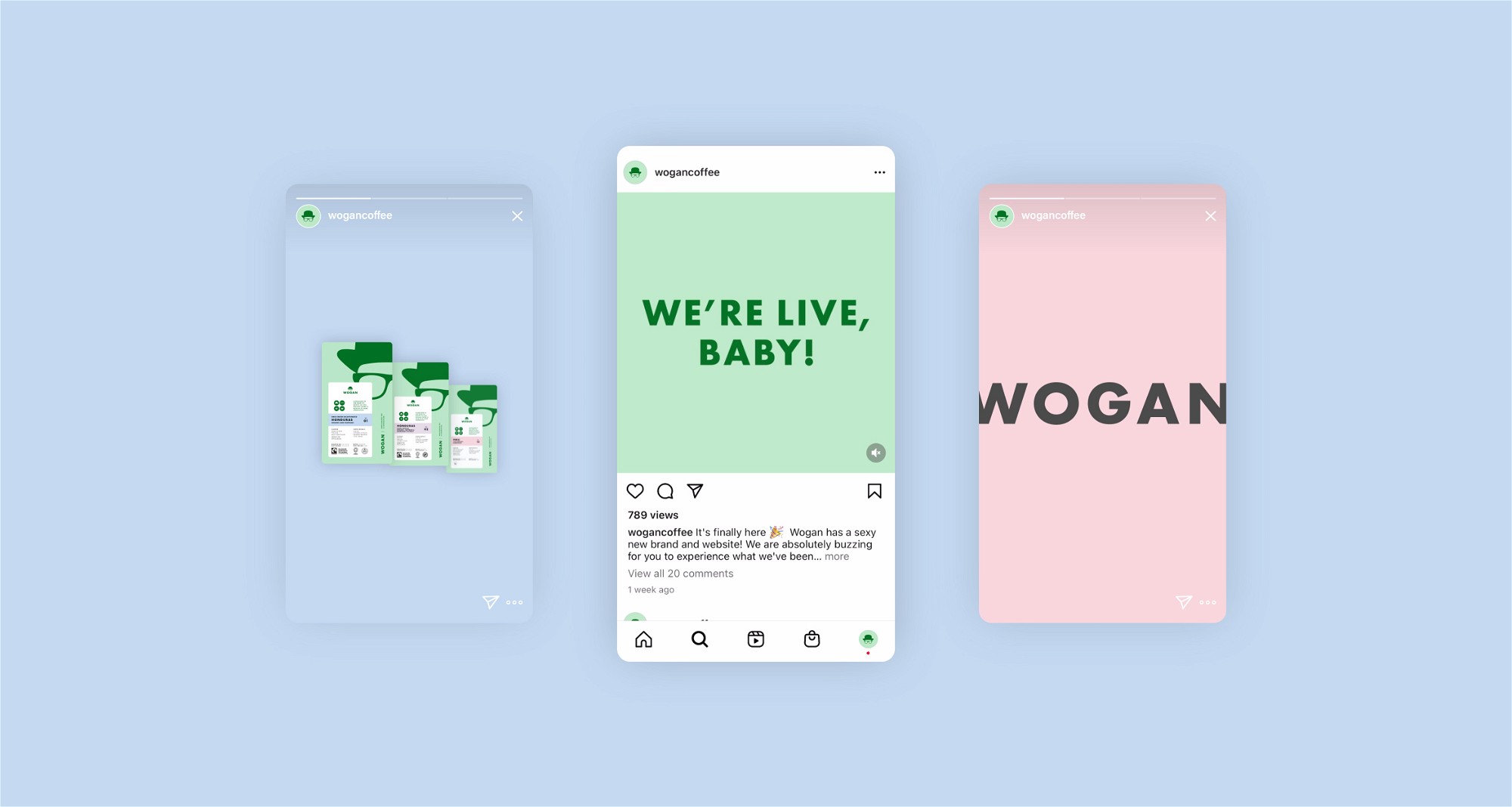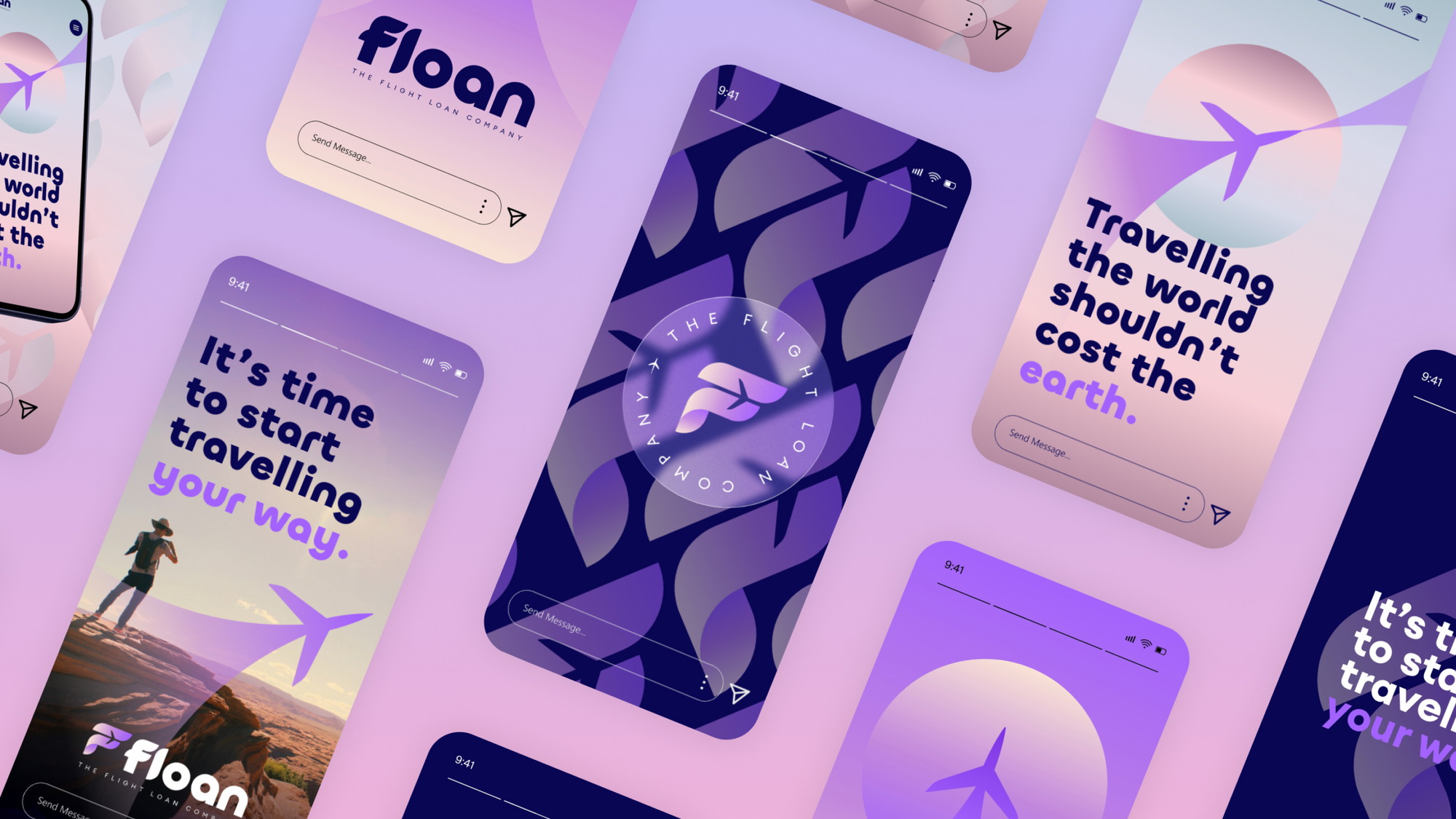Email Marketing at KOTA: Best practice in creative newsletter design

Introduction
Here at KOTA, we care as much about great engaging content as we do about awesome design. This is why we recommend to most of our clients that they send out a regular email newsletter. It’s a great way of building an audience and encouraging recurring engagement. Plus it has become a popular element of digital marketing strategies, with the vast majority of online companies sharing the latest updates via newsletters.
The basic elements of a good newsletter design are simple, yet we see plenty of examples that miss the mark. There’s no black magic here, just solid email template design, good layout and the right balance between good visuals and engaging content.
Although the design process varies from project to project, there are a number of main principles and guidelines we follow when designing for email marketing – read about them below!
1. Great Design
Investing in great design is key. If you want to use basic free templates for your newsletter, they can still work, but overall newsletters will always benefit from a designer’s eye and the many extra flourishes they might add.
Often we see it’s marketers that are left with the task of designing newsletters, who lack design expertise and coding skills. You don’t have to use a designer every time, but a well-designed reusable template built around your specific brand needs can make this process a lot easier. It will provide bespoke looking templates that avoid the cookie-cutter basic template approach used by many. It will also empower non-designers and marketers to create top-quality newsletters effortlessly. Good typography combined with strong layouts mean you don’t need to search for stock images for each section which can reduce production time and prevent the basic free template vibe.
2. Consistent Branding
Newsletter design is one of the most restrictive forms of digital design due to email compatibility issues and needing to support email clients from a million years ago. These restrictions mean smart design solutions and creative workarounds are more important than ever to ensure quality and consistency, especially when it also needs to work on small screens. Even the biggest brands out there get this wrong and send out really rough designs that barely align with their brand guidelines or any modern digital design standards.
Most importantly, in a climate of fear around digital security, a badly designed email newsletter can instantly set the alarm bells ringing if it looks off-brand and fake. So, a good design can mean much more than just pretty looks – it’s the difference between engagement and hitting the trash icon.
Given newsletters are key to so many brands’ consumer communications, they must look as smart and on-brand as every other digital touchpoint. Get creative, but make sure you test your work thoroughly across all platforms and devices.
3. Enticing CTAs
Use clear and concise call-to-action buttons that compel users to click through. What drives them can vary from business to business, yet one universal factor will always be curiosity. If your CTA’s can satisfy any curiosity related to the subject of the newsletter, they’re much more likely to convert. Curiosity can come in many forms, it might be around a possible bargain deal or it could be a simple thirst for knowledge.
Use data and your intuition to find the best CTAs, experiment and see what converts week to week. The design and placement of your CTA are key as well. If your buttons are too small, colours too garish or placement slightly off then users are less likely to click. Equally anything too wild or unintuitive at a glance will put users off.
4. Clear Structure
Structure your newsletter like any piece of digital content, flesh out the narrative, identify your audience and get creative. Just like on the landing pages we build at KOTA, we recommend that our clients keep content to the point and as snappy as possible.
The ‘shop window’ approach works just as well for newsletters as it does websites, let subscribers scan your products, provide clear points of interest and encourage them to explore further on your website. Try not to overload users with information, emails should be a way to encourage users to dig deeper and engage, not read an essay.
5. Engaging content
Well thought out content and frequent updates are really important for creating regular and ongoing engagement with your consumers. They need to be hooked in quickly as your email will be surrounded by plenty of others fighting for competition (think Black Friday sales).
With this in mind, there’s no point in sharing content that you’re not 100% happy with for the sake of sticking to a content calendar. No one is eagerly awaiting your newsletter at the same time every week, so there is absolutely no harm in skipping the odd campaign if you just don’t have anything engaging to share. Find content you genuinely want to share with your audience and send it at a rate that works for and your team.
6. Mobile-responsive template
It almost goes without saying nowadays, but you absolutely have to make sure your designs work on all screen sizes. There’s no point in crafting a beautiful desktop-only newsletter that breaks on peoples phones. Email templates are essentially mini coded websites and need to be treated as such. Don’t get tempted to poke around in the code if you don’t know how it’s going to affect the experience on every device.
7. A/B Testing
Once you have the perfect design and content, make sure to test it, as finding what works best for your audience is not always straight-forward. By trial and error, you can work out the best strategy to improve your conversions in each of the customer segments. Luckily, most email marketing platforms will do most of the hard work by enabling you to run A/B tests.
So, what can you test? Options include send times, subject lines and of course, content. See what type of imagery works best, which content should go first or maybe even experiment with your brand’s tone of voice.
The winning combination will be sent to the majority of your subscribers. Then all that’s left is to keep an eye on the results, depending on the type of metrics you find the most important.
Conclusion
Newsletters can be a super simple way to keep your audience informed and your brand at the forefront of their minds. It’s the easiest way to reach a wide audience and therefore the most likely to fall victim to quality control issues. Make sure to plan your strategy effectively, be creative with design, get the right team members involved and test, test, test!
Our agency is always happy to help with bespoke newsletter templates, as well as managing your email campaigns – reach out to find out more about our email marketing services!
Interested in working with KOTA?
Drop us a line at
hello@kota.co.uk
We are a Creative Digital Agency based in Clerkenwell London, specialising in Creative Web Design, Web Development, Branding and Digital Marketing.








